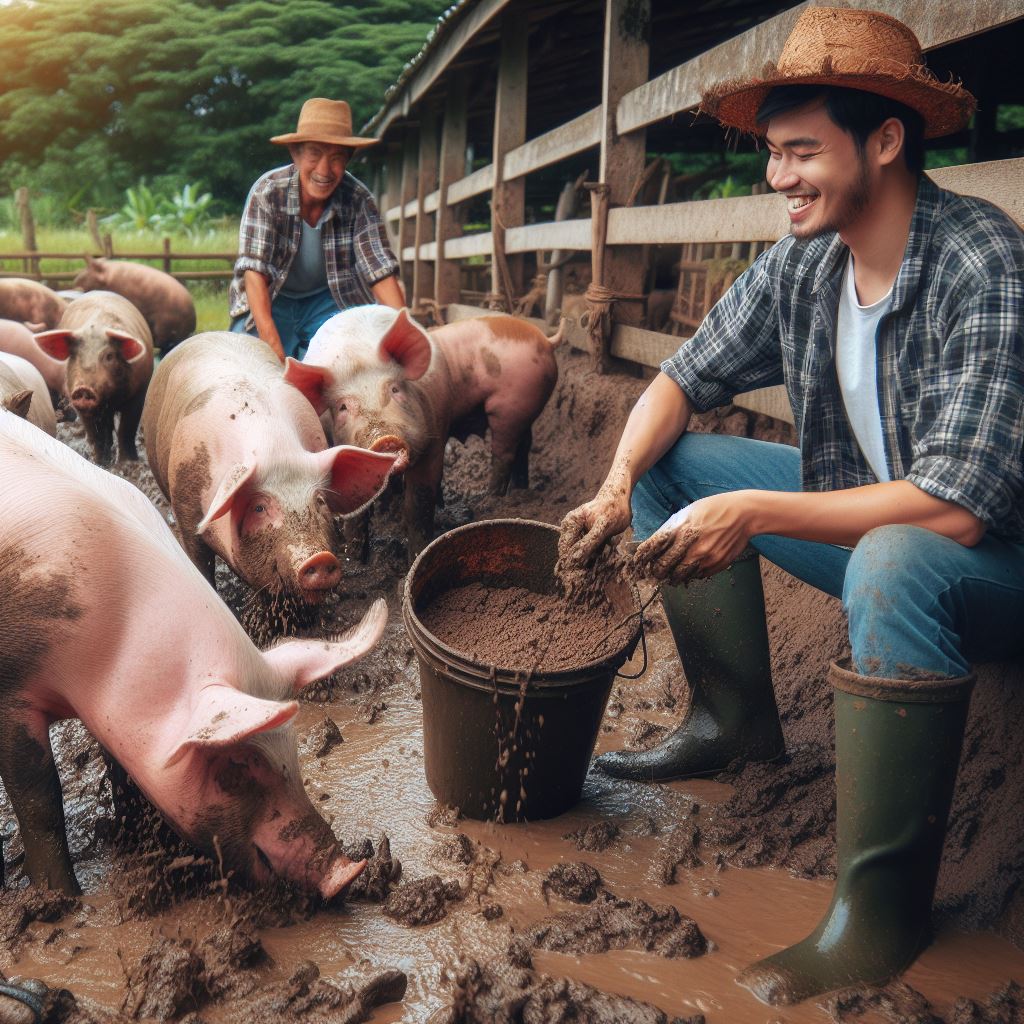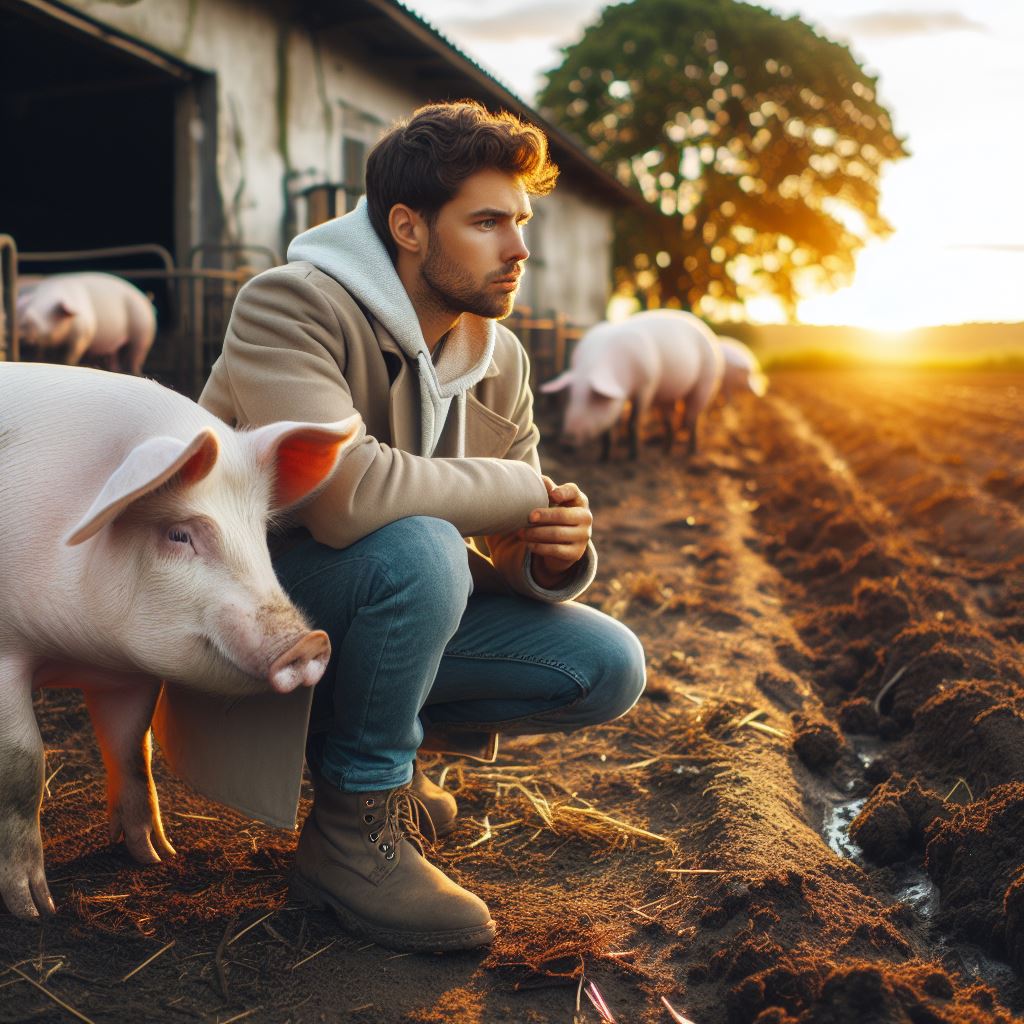Introduction
In order to ensure optimal production and profitability, it is crucial to maintain good health in beef cattle using beef cattle health tips. Neglecting their well-being can significantly impact their growth and overall performance.
Healthy cattle exhibit improved weight gain, reproductive performance, and resistance to diseases.
Regular veterinary care, proper nutrition, and a clean environment contribute to disease prevention and control.
Healthy cattle are more efficient in converting feed into muscle, enhancing the profitability of beef production.
Additionally, ensuring the well-being of the herd promotes sustainability, minimizes the need for antibiotics, and meets consumer expectations for quality and ethical farming practices.
Overall, prioritizing health in beef cattle is essential for economic viability, animal welfare, and sustainable agriculture.
To boost cattle’s health, here are some top tips that every farmer should consider implementing.
Tip 1: Proper Nutrition
One of the key factors in ensuring good health for beef cattle is providing them with proper nutrition.
Nutrition plays a crucial role in the overall well-being of cattle. As with humans, a balanced diet is essential for their growth, development, and disease prevention.
Feeding cattle a well-balanced diet ensures that they receive all the necessary nutrients, including carbohydrates, proteins, vitamins, and minerals.
This helps in promoting their immune system and increasing resistance to diseases.
It is important to understand the specific nutritional requirements of cattle. Different types of cattle, such as calves, pregnant cows, or those used for meat production, have different dietary needs.
Consulting with a veterinarian or a nutritionist can help in planning the appropriate diet for each group.
Veterinarians and nutritionists can guide cattle owners on the correct feeding practices to ensure optimal health.
They can provide advice on the quantity, quality, and frequency of feeding, as well as recommend suitable feed sources.
Transform Your Agribusiness
Unlock your farm's potential with expert advice tailored to your needs. Get actionable steps that drive real results.
Get StartedFeeding practices should focus on providing a balanced diet that meets the energy and nutrient requirements of cattle.
This includes offering a variety of forage, such as grass, hay, or silage, along with concentrates like grains or protein supplements.
Ensuring access to clean and fresh water at all times is also crucial for their overall health and digestion.
Additionally, cattle owners should regularly monitor the body condition of their animals.
This can be done by assessing the body condition score (BCS) which provides an indication of their nutritional status.
Adjusting the diet based on BCS can help prevent underfeeding or overfeeding.
Essentially, proper nutrition is essential to boost the health of beef cattle.
A balanced diet, correct feeding practices, and consultation with professionals can help ensure that cattle receive the necessary nutrients for their overall well-being.
Tip 2: Regular Veterinary Care
Regular veterinary care is essential for ensuring the overall health and well-being of your beef cattle.
Just like any other living being, cattle need routine check-ups and vaccinations to prevent and manage potential health issues.
Explanation of the Necessity of Routine Check-ups and Vaccinations
Regular check-ups allow veterinarians to detect and treat any health problems in their early stages.
This can significantly increase the chances of successful treatment and prevent potentially serious complications.
Vaccinations are crucial for protecting cattle from various diseases and infections.
They help boost the animal’s immune system and minimize the risks of outbreaks that can cause substantial economic losses.
Importance of Developing a Relationship with a Reliable Veterinarian
Having a trusted and reliable veterinarian is paramount. They understand the specific needs and challenges of beef cattle and can provide appropriate guidance and support.
A reliable veterinarian can help you develop an effective health management plan tailored to the specific conditions of your farm. They can also offer advice on nutrition, breeding, and overall animal welfare.
Moreover, a good veterinarian will have in-depth knowledge of local disease patterns and can promptly respond to emergencies, ensuring the best possible care for your cattle.
Reminder to Schedule Regular Health Exams and Vaccinations for Cattle
It’s essential to establish a schedule to ensure your beef cattle receive regular health exams and vaccinations as recommended by your veterinarian.
Typically, health exams should be conducted at least annually, while vaccinations may be required more frequently, depending on the specific diseases prevalent in your area.
During health exams, the veterinarian will assess the general condition of your cattle, check for signs of infections or diseases, and administer necessary vaccinations.
Remember to maintain comprehensive records of all veterinary visits, including dates, procedures, and results. These records will help track your cattle’s health history and aid in future decision-making.
Basically, regular veterinary care is crucial for maintaining the health and well-being of beef cattle.
Schedule routine check-ups and vaccinations, establish a relationship with a reliable veterinarian, and never underestimate the importance of prevention and early detection to ensure a thriving herd.
Read: Automated Watering Systems: A Game Changer
Showcase Your Farming Business
Publish your professional farming services profile on our blog for a one-time fee of $200 and reach a dedicated audience of farmers and agribusiness owners.
Publish Your ProfileTip 3: Adequate housing and environment
In order to boost your beef cattle’s health, providing adequate housing and a suitable environment is crucial. Proper housing conditions play a significant role in ensuring the well-being of the animals.
The ideal housing for beef cattle should include spacious and clean areas. The size of the structure should allow the animals to move comfortably, avoiding overcrowding.
It is important to provide enough space for each animal to rest, feed, and roam freely.
Furthermore, cleanliness is of utmost importance in maintaining the health of beef cattle. A clean environment helps prevent the spread of diseases and keeps the animals comfortable.
Regular cleaning of the housing area is essential to remove manure and other waste, reducing the risk of bacterial and parasite infestations.
Well-ventilated spaces are also vital for beef cattle. Good air circulation helps remove moisture and odors, preventing the buildup of harmful bacteria and pathogens.
Proper ventilation reduces the risk of respiratory diseases, such as pneumonia, which can greatly impact the overall health and productivity of the animals.
Importance of providing appropriate shade, shelter, and ventilation for optimal health
In addition to clean and well-ventilated housing, providing appropriate shade, shelter, and ventilation is crucial for optimal health.
Beef cattle are sensitive to extreme weather conditions, including excessive heat, cold, and rain.
They should have access to shaded areas to protect themselves from the scorching sun, as prolonged exposure can lead to heat stress.
Shelter is also necessary to shield the animals from strong winds, heavy rains, and extreme cold.
Windbreaks or natural barriers can be used to create a protected area where the cattle can seek refuge during harsh weather conditions.
Adequate ventilation in the shelter ensures a comfortable environment and reduces the risk of respiratory issues.
Moreover, proper flooring in the housing area is important to ensure the comfort and well-being of the cattle.
Avoid concrete flooring as it can be hard on their joints and hooves. Instead, opt for softer materials like rubber mats or wood shavings to provide a more comfortable surface for resting and moving around.
Overall, adequate housing and a suitable environment are essential for maintaining the health and welfare of beef cattle.
Providing clean and well-ventilated spaces, along with appropriate shade, shelter, and ventilation, can help prevent diseases and ensure optimal growth and productivity.
By prioritizing the housing needs of beef cattle, you can enhance their overall health and well-being, resulting in happier and more productive animals.
In fact, remember that your cattle’s housing conditions are directly linked to their health. Create a clean, well-ventilated, and comfortable environment to boost their overall well-being.
Read: Top 2024 Livestock Health Monitoring Gadgets

You Might Also Like: Effective Fencing for Pasture Rotation
See Related Content: Lambing Guide: Best Practices
Tip 4: Disease Prevention and Biosecurity
Ensuring the health of your beef cattle is crucial for their productivity and overall well-being.
One key aspect of maintaining their health is implementing disease prevention strategies and biosecurity measures.
Let’s delve deeper into their significance and how you can protect your cattle from common diseases.
The Significance of Biosecurity Measures
Biosecurity measures play a vital role in safeguarding your beef cattle from infectious diseases.
By establishing a strong biosecurity plan, you can minimize the risk of disease introduction and transmission within your herd.
This, in turn, helps maintain animal health and prevents economic losses due to illnesses.
By securing your farm against external threats, such as contaminated equipment, vehicles, or personnel, you can create a barrier that prevents the entry of pathogens.
Biosecurity measures also include measures to control vectors, such as insects and rodents, that can transmit diseases to your cattle.
Common Diseases in Beef Cattle and Prevention Methods
Beef cattle can be susceptible to various diseases, but with the right prevention strategies, you can significantly reduce their incidence. Here are some common diseases and effective prevention methods:
- Bovine Respiratory Disease (BRD): Implementing a vaccination program, maintaining proper ventilation, and separating sick animals can prevent the spread of BRD.
- Foot Rot: Providing clean and dry living conditions, regular hoof trimming, and avoiding overcrowding can help prevent foot rot in cattle.
- Internal Parasites: Rotate pastures, practice proper manure management, and administer antiparasitic treatments to prevent internal parasites in beef cattle.
- Blackleg: Vaccination is the most effective way to prevent blackleg, along with properly disposing of carcasses to prevent contamination of pastures.
- Bloat: Ensuring access to clean water, avoiding sudden diet changes, and using anti-bloat agents can help prevent bloat in cattle.
Implementing Quarantine Protocols and Vector Control
In addition to practicing general biosecurity measures, implementing quarantine protocols is crucial when introducing new animals to your herd.
Quarantine allows for a thorough health check and isolation of new animals, preventing the spread of any potential diseases.
Furthermore, controlling vectors is essential. Regularly inspect and maintain your facilities to eliminate potential breeding grounds for insects and rodents.
Implement adequate pest control measures, such as using insecticides and traps, to reduce the risk of disease transmission through vectors.
Collaborating with your veterinarian to develop and maintain a comprehensive disease prevention plan tailored to your specific farm is highly recommended.
Your veterinarian can provide guidance on vaccination schedules, diagnostic testing, and treatment options for various diseases.
In general, disease prevention and biosecurity are integral for maintaining the health and productivity of your beef cattle.
By implementing biosecurity measures, preventing common diseases, and utilizing quarantine protocols and vector control, you can create a healthier environment for your cattle and protect them from potential threats.
Remember, a healthy herd is the foundation of a successful beef cattle operation.
Showcase Your Farming Business
Publish your professional farming services profile on our blog for a one-time fee of $200 and reach a dedicated audience of farmers and agribusiness owners.
Publish Your ProfileRead: Innovative Manure Management Tools and Tips
Tip 5: Proper Herd Management
In order to boost the health of your beef cattle, it is crucial to implement proper herd management practices.
One of the most important aspects of herd health management is regular monitoring and record-keeping.
This allows you to keep track of each individual animal’s health and identify any issues early on.
Regular check-ups, vaccinations, and deworming should be a part of your herd management routine. This helps prevent diseases and keeps your cattle in optimal health.
Implementing a proper breeding program is essential for maintaining a healthy and productive herd. Choose the right bulls for your cows to ensure good genetics and avoid any potential health issues.
Managing stress levels is another crucial aspect of herd health management. Stress can weaken the immune system of your cattle, making them more susceptible to diseases.
Ensure that your cattle have a comfortable and stress-free environment. Provide clean water, sufficient food, and adequate shelter to keep their stress levels to a minimum.
Regular exercise is also beneficial for your cattle’s overall health. Encourage movement by providing them with enough space to roam and graze.
Observing the behavior of your cattle can also give you important insights into their health. Look out for any signs of lameness or changes in eating and drinking habits.
If you notice any abnormal behavior or symptoms, it is crucial to take immediate action. Consult a veterinarian to get a proper diagnosis and treatment plan.
Keep detailed records of each animal’s health and medical history. This information will be useful for future reference and can greatly assist in troubleshooting any health problems.
Regularly review your herd management practices and make adjustments as needed. Stay updated on the latest best practices and research in cattle health to ensure your management methods are the most effective.
Proper herd management is not only essential for the health of your beef cattle, but also for the success and profitability of your operation.
By implementing these practices, you can boost the overall health and productivity of your herd.
Read: Poultry Health: Preventing Common Diseases
Conclusion
We have discussed several top tips to boost the health of your beef cattle.
These tips include providing a balanced and nutrient-rich diet, ensuring proper vaccination and deworming, providing adequate shelter and clean water, and implementing regular health checks.
It is important to emphasize the long-term benefits of ensuring good health in beef cattle.
Healthy cattle not only have better growth rates and reproductive performance but also require less medication and veterinary intervention, leading to cost savings for the farmers.
We strongly encourage you to implement the tips discussed in this blog post for improved cattle health.
By taking proactive measures to enhance their well-being, you will not only contribute to the overall profitability of your operation but also ensure the welfare of your animals.




